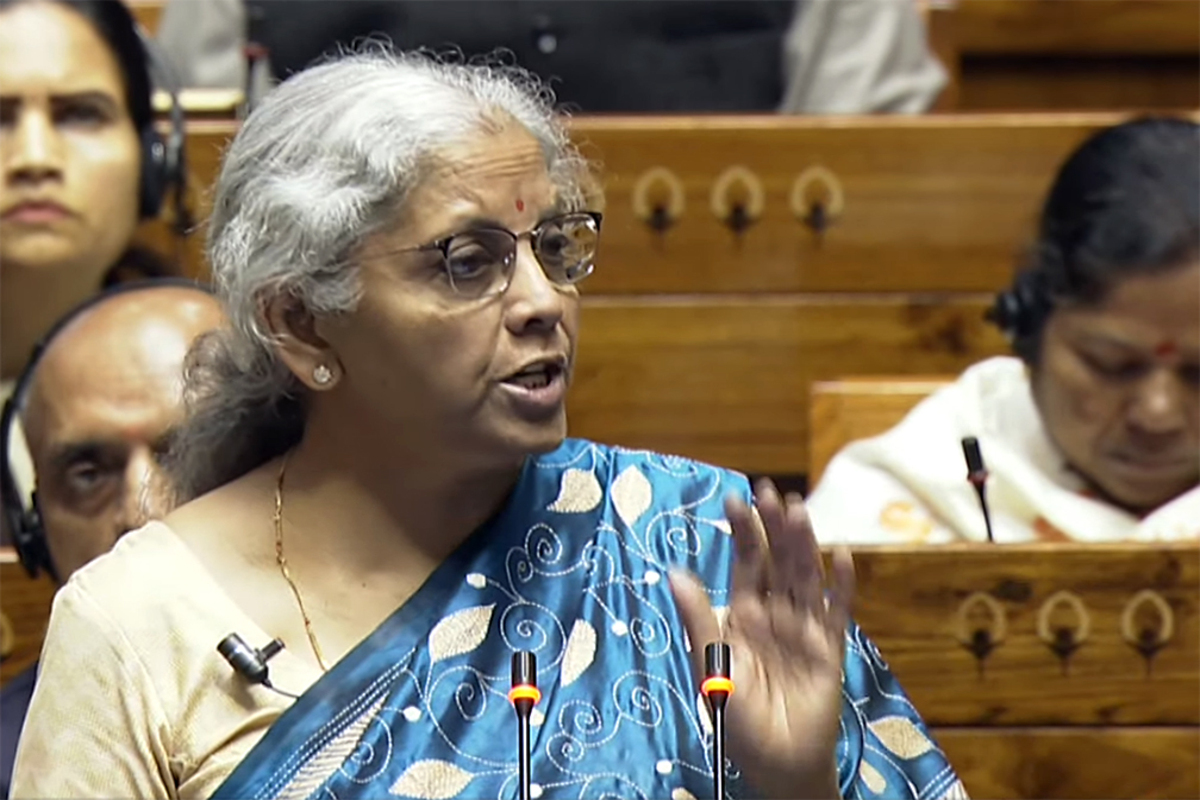Challenge in Bihar
In the tumultuous arena of Bihar politics, where alliances shift like sand dunes in the wind, this election seems poised to redefine the political landscape.
Finance Minister Nirmala Sithara- man’s announcement that India aims to reduce its fiscal deficit to 5.1 per cent of GDP in 2024-25 sends a strong signal to investors.

New Delhi, Feb 01 (ANI): Union Finance Minister Nirmala Sitharaman presents the Interim Union Budget 2024 at the Lok Sabha of the Parliament House in New Delhi on Thursday. (ANI Photo/Sansad TV)
As the Centre unveiled its interim budget ahead of the general election, the government’s strategic fis- cal choices send a clear message of confidence tempered by caution. Prime Minister Narendra Modi’s administration, rather than succumbing to the pre-elec- tion allure of populist spending, has opted for fiscal cons- olidation, demonstrating a belief in electoral victory bas- ed on approval ratings and recent milestones. The ab- sence of substantial social spending echoes the ruling party’s confidence in securing another term, reflecting Mr Modi’s high approval ratings, especially after Ayod- hya. The government’s decision to leave tax rates and slabs unchanged and trim major subsidies on essential commodities such as food, fertilisers and fuel by 8 per cent indicates a commitment to financial prudence, al- though personal income tax payers must look askance at their contributions to the coffers being higher than that of corporates and GST. Finance Minister Nirmala Sithara- man’s announcement that India aims to reduce its fiscal deficit to 5.1 per cent of GDP in 2024-25 sends a strong signal to investors. This fiscal consolidation, coupled with the historic high of more than Rs 11 lakh crore allo- cated to capital expenditure, positions India at what Mr Modi describes as a “sweet spot” for economic growth. This move is expected to bolster the case for a higher sovereign credit rating, a crucial aspect for international credibility and investor confidence. Despite the focus on fiscal discipline, concerns linger over weak spots in the economy, particularly in the realm of consumption. While India anticipates a record-beating 7.3 per cent eco- nomic growth by the end of fiscal year 2023-24, the gro- wth in consumption, constituting nearly 60 per cent of GDP, remains tepid at just over 4 per cent. The budget’s limited quantum of consumption triggers is a notable departure from previous pre-election budgets, raising questions about its potential implications for lower- income earners, particularly in rural areas. The finance minister attempted to address some of these concerns by announcing plans to build 20 million affordable houses in the next five years, in addition to the 30 million already constructed. Furthermore, a scheme for housing the middle class is in the works, though details are yet to be revealed. These measures aim to stimulate economic ac- tivity and provide a boost to the housing sector.
While the budget had a subdued impact on equity and currency markets, the better-than-expected fiscal deficit target and lower-than-estimated borrowing have positively influenced bond markets. The benchmark 10- year bond yield dropped to over six-month lows, reflect- ing investor confidence in the government’s fiscal man- agement. In the midst of these fiscal deliberations, the in- terplay between confidence and concerns continues. The government’s bet on fiscal consolidation to attract inves- tors is balanced by the acknowledgment of challenges, especially in stimulating consumption. As India stands at the cusp of significant economic decisions, the budget reflects a nuanced approach, attempting to navigate the intricate path between electoral confidence and eco- nomic pragmatism. Only time will unveil the true impact of these choices on India’s economic trajectory and the electoral landscape.
Advertisement
Advertisement